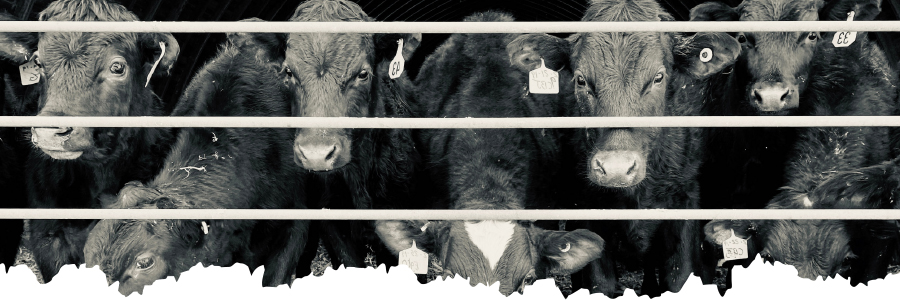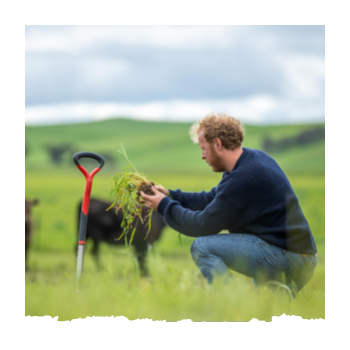


Sign-up for {N}power to get exclusive discounts, newsletters, members-only features, and more!

In the face of climate change, eating can be a revolutionary act. Indeed, the way you choose to eat has likely never been as important as it is now. Our current model of producing food is one that relies on high-intensity monocultures, dedicated to producing a single crop or livestock species, using massive amounts of synthetic chemical fertilizers, pesticides, hormones, and antibiotics. This industrialized model of agriculture to grow crops is harmful, and raising animals in this model using concentrated animal feeding operations (CAFOs) to produce meat, eggs, and dairy is particularly harmful—to the animals, to the water and air, to the communities in which they are located, to the people who work there, to public health, and to the climate. Once you realize this, you’ll likely be ready to change the way you eat. The answer lies in regenerative agriculture, a system that builds healthy soil, enhances biodiversity, improves water quality, uses organic methods to grow crops, and raises animals in a natural and humane way.

Where to begin? Let’s start with the basics. A CAFO is a large facility where animals are kept and raised in confined environments (usually indoors, where movement is restricted) and feed (usually grain of some sort) is brought to the animals rather than allowing them to roam and feed in pastures, fields, or on rangelands. This system has been consolidated to where just four corporations own the majority of production—JBS S.A., based in Brazil; Smithfield, a subsidiary of a Chinese conglomerate; Tyson Foods; and Cargill.1 2 These corporations have created a model of “vertical integration,” in which they own every aspect of the production chain, from the animals themselves, to producing the feed, to slaughtering, to packaging, turning the farmers who contract with them into virtual serfs, requiring them to “grow” the livestock with little to no choice in how they raise their animals.3 4
Additionally, because of industry lobbying and pressure, there is little oversight in these operations, including workers’ rights and safety. For example, even though agriculture ranks third among all occupations in fatal injuries,5 because of loopholes pushed for by the industry, the Occupational Safety and Health Administration (OSHA) has limited standards to protect workers in the dairy, poultry, and livestock industries, many of them immigrants (including minors)6 and people of color.7
Speaking of little oversight, CAFOs are a huge source of air and water pollution, yet there are few regulations to keep them in check.8 It has been estimated that each year, animals in CAFOs create between three and 20 times more waste than all of the people in the U.S., with no sewage treatment required.9 This waste contains pathogens and antibiotics that can contaminate water supplies and high levels of phosphorous and nitrogen that lead to destructive algae blooms in local waterways, while the fumes and particulate matter increase the rates of asthma, bronchitis, and other respiratory illnesses among workers and people who live nearby. And while the Environmental Protection Agency (EPA) is supposed to regulate CAFOs under the Clean Water Act, it has admitted that “…unlike many other point source industries, the EPA does not have facility-specific information for all CAFOs in the United States.”10
In an effort to shed some light on the lack of information, the National Resources Defense Council (NRDC) filed requests for EPA records under the Freedom of Information Act to see exactly what information federal regulators had on existing CAFOs. What they found was alarming: While the EPA estimated in 2012 that there were 17,329 CAFOs operating in the U.S., there was data (including information on the size, type, location, and pollution control measures) on only 7,595 of them. When it came to information on waste management, the NRDC found information for only 5.6 percent of the EPA’s estimated number of CAFOs. Even more alarming is that after the EPA released records to the NRDC, industry interests filed a lawsuit to prohibit the EPA from releasing information in response to future Freedom of Information Act requests. In 2017, the EPA signed a settlement agreement with industry groups “severely limiting the scope of any future information releases.”11
In addition to oligarch level of control and lack of oversight, CAFOs are a leading cause of antibiotic-resistant pathogens.12 13 Animals raised in unhealthy, cramped environments are susceptible to disease outbreaks, so they are regularly dosed with low levels of antibiotics in an effort to keep disease at bay; this prophylactic, sub-therapeutic use causes bacteria to evolve to become resistant to common antibiotics used in human medicine. CAFOs are also inherently linked to the over-production of genetically modified commodity crops like corn and soy, which require massive amounts of pesticides and fertilizers. A report released in 2022 by the Center for Biological Diversity and World Animal Protection revealed that more than 235 million pounds of herbicides and insecticides were used on corn and soybeans grown to feed animals in CAFOs in 2018 (the most recent year for which data was available).14 And finally, we can all agree that animals raised in this way live abysmal lives.
This way of producing food isn’t just unsustainable, it is degenerative.
 A recent national survey of registered voters conducted by Johns Hopkins found that there “was significant concern with the negative health and environmental impacts caused by CAFOs, as well as support for greater government oversight.”15 We want better—for the animals, for the environment, for farmworkers, and for our health.
A recent national survey of registered voters conducted by Johns Hopkins found that there “was significant concern with the negative health and environmental impacts caused by CAFOs, as well as support for greater government oversight.”15 We want better—for the animals, for the environment, for farmworkers, and for our health.
The answer lies in regenerative agriculture, which views the system as an interconnected whole—the soil, water, air, animals, people, and community. Animal and land relationships are a foundational philosophy of regenerative agriculture—when farm animals are returned to the land, they build healthy and resilient soil, which is capable of capturing CO2, removing it from the atmosphere, and improving water retention, critical in the face of climate disasters like drought and flooding.16 It eliminates the need for synthetic pesticides and fertilizers. And because animal health and welfare are prioritized, it also reduces the use of antibiotics by eliminating the subtherapeutic use of them, using them only if an animal is ill and actually needs them. The benefits are bountiful and include ecological benefits, economic benefits, and health benefits for farmworkers and local communities.17
Regenerative agriculture doesn’t end with animal products, they are only one part of the picture. It is also crucially important to support organic and regenerative practices when it comes to fruits, vegetables, and other plant foods.
Unfortunately, as the term “regenerative” has gained momentum, many of the same companies fueling the destructive state of modern farming are now trying to shield their harmful practices behind an illusion of restorative sustainability. To do so, they’re co-opting a handful of its processes into the industrialized agriculture machine, where other inputs continue degrading soil and biodiversity, inherently negating regenerative outcomes.32 Truly regenerative agriculture does not employ the use of hormones, antibiotics, synthetic pesticides, and fertilizers—all inputs that by design destroy biodiversity. Likewise, regenerative agriculture does not raise animals in landless confinement, removed from the natural harmony they bring to the farm ecosystem.33 34 35 Take a stand against the dilution of the true meaning of “regenerative agriculture” by holding those that use its name accountable for the outcomes.
Regenivore, noun:
A person who eats in a way that supports a shift from degrading, stripping, and crippling to regenerating and sustaining—our planet, our health, and our economies. Regenivores know that the food on our plates and the farmers, ranchers, and grocers we support are directly connected to the biodiversity of our food web, the integrity of the soil, the health of the planet, our own health, and the health of our families and friends.
Together we all—the farmer, the rancher, the grocery store proprietor, and the eater—can start a movement to redirect the future. The influence of our collective actions can ensure we all have access to nourishing food, restore our topsoil, sequester greenhouse gasses that imperil our planet, improve our health, and create more robust and equitable economies.31 And because we are acting together, it will echo in the halls of policy and power with a persistence that can no longer be ignored. We are Regenivores and THIS is the future of food, for a healthy planet and healthy people.



Sign-up for {N}power to get exclusive discounts, newsletters, members-only features, and more!